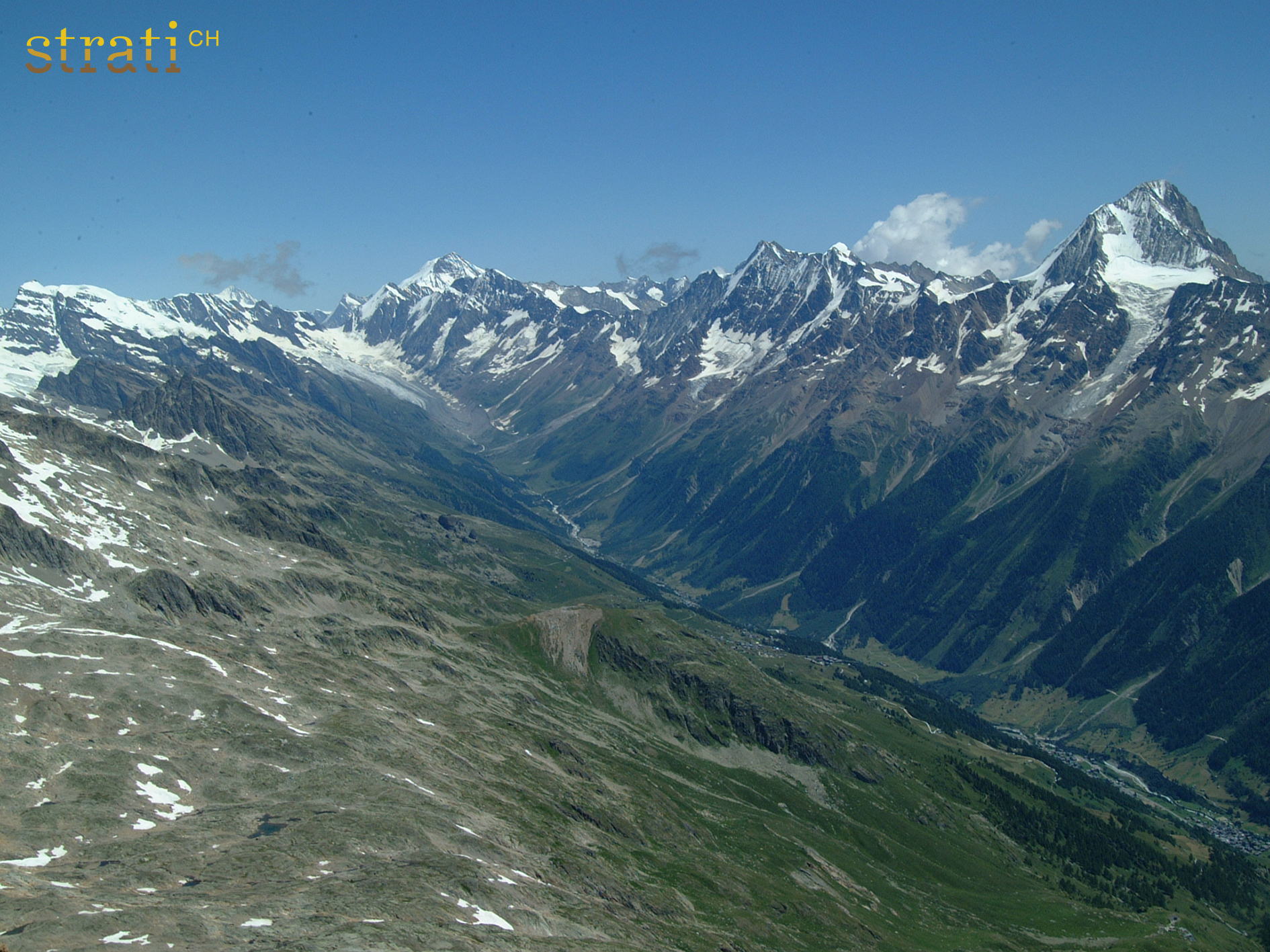Lötschental-Gneiskomplex
Torna a Massiccio dell'AarRappresentazione e statuto
- Index
- G-L
- Colore CMYK
- (0%,18%,27%,14%)
- Colore RGB
- R: 250 G: 190 B: 175
- Rango
- Formazione litostratigrafica
- Uso
- Unità in uso.
- Status
- termine informale
Nomenclatura
- Deutsch
- Lötschental-Gneiskomplex
- Français
- Complexe gneissique du Lötschental
- Italiano
- Complesso gneissico del Lötschental
- English
- Lötschental Gneiss Complex
- Origine del nome
- Varianti storiche
-
Zone des paragneiss du Lötschental et de la couverture méridionale du granit de l'Aar = Gneiss précarbonifères (Swiderski 1919), Lötschental-Fernigen-Schieferzone, Paragneiss du Lötschental (Collet & Paréjas 1928), Lötschentaler Paragneisse = Zone des paragneiss du Lötschental (Rutsch et al. 1966), Paragneise des Lötschentales (Gigon 1981), Lötschental Gneiss Complex (Berger et al. 2017)
Età
- Geomorfologia
-
- Paleozoico
- Età alla base
-
- Precambriano
Geografia
- Regione-tipo
- Lötschental (VS)
Paleogeografia e tettonica
-
- Basamento policiclico ante-varisco dell'Elvetico
- Paleogeografia
- placca continentale europea
- Termini generici
- Metamorfismo
- policiclico
Referenze
- Definizione
-
(1919) :
La partie occidentale du massif de l'Aar entre la Lonza et la Massa. Mat. Carte géol. Suisse (N.S.) 47/1, 82 pages
Rutsch et al. 1966: ZONE DES PARAGNEISS DU LÖTSCHENTAL (Palaeozoikum ; Aarmassiv): Auf seiner geologischen Karte des westlichen Aarmassives hat Swiderski (1919: 45 + Karte) die komplex aufgebaute, praeherzynische Lötschentaler Paragneiszone ausgeschieden. Es handelt sich um schiefrige Gesteine, die im allgemeinen ihren sedimentären Charakter behalten haben (phyllites plus ou moins feldspatisées, schisteuses, passant aux schistes phylliteux, schistes sériciteux, schistes chloriteux ou des talcschistes, quartzphyllades et des quartzites chloriteux, schistes quartzito-micacés feldspatiques, micaschistes à deux micas; toute une série de paragneiss à séricite, à biotite, ou chlorite, à amphibolite, cornéennes et des gneiss oeillés. Amphibolites). Siehe hierzu auch Hügi (1956: 5 uff).
- Revisione
-
(2017) :
Geological Map of the Aar Massif, Tavetsch and Gotthard Nappes. Geological Special Map 1:100'000, Explanatory Notes 129
p.28: A very similar situation as described below for the Guttannen Gneiss Complex (Haslital section) is found in the Lötschental (ABRECHT 1994), but unlike the Haslital section, large masses of leucocratic muscovite gneiss occur mainly near the northern border of the Lötschental Gneiss Complex (HÜGI et al. 1985, 1988).
Therefore, the Guttannen Gneiss Complex was separated from the Lötschental Gneiss Complex, but both of them were grouped together into the Ferden-Guttannen Zone.

